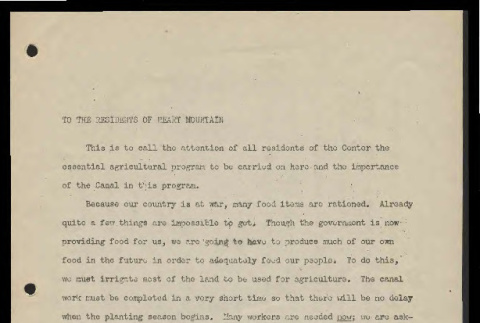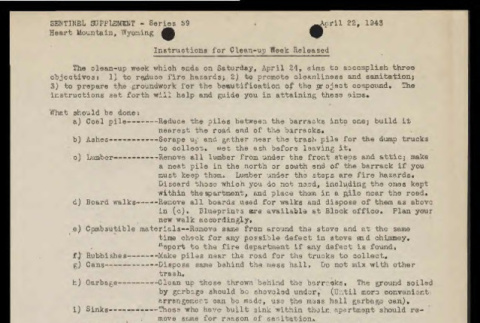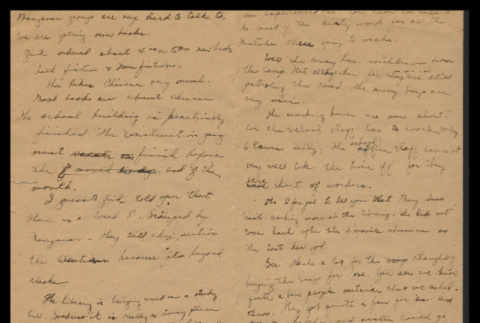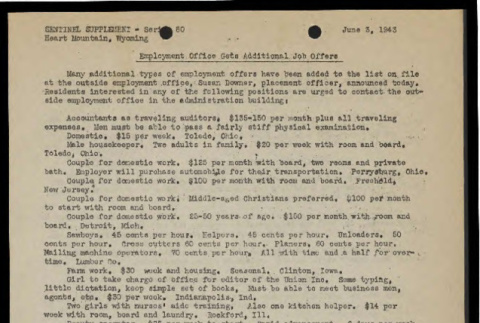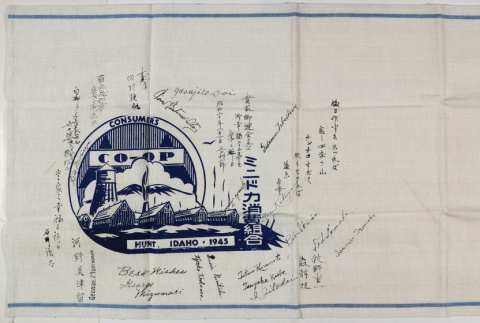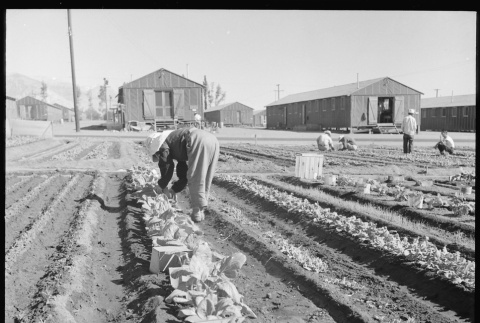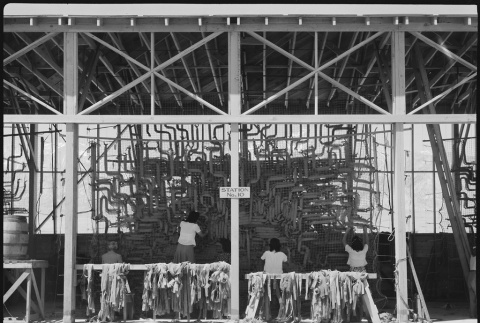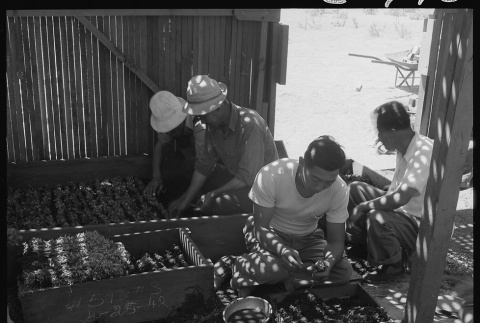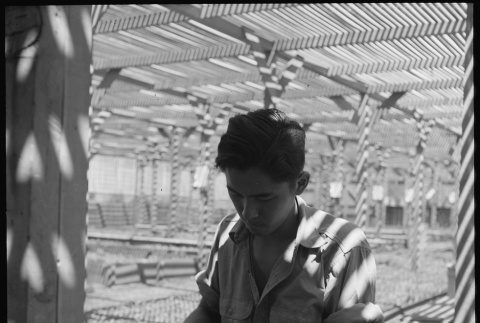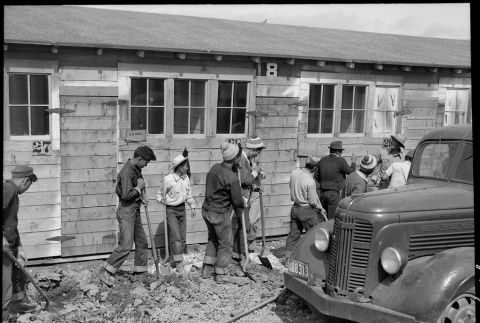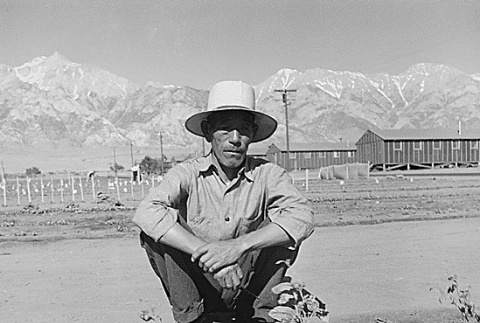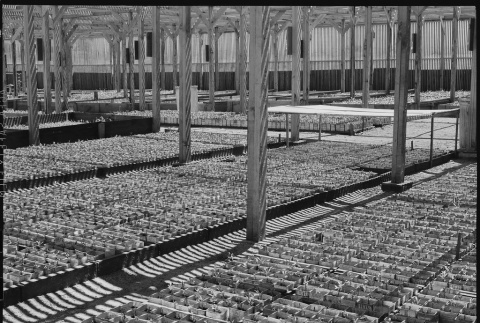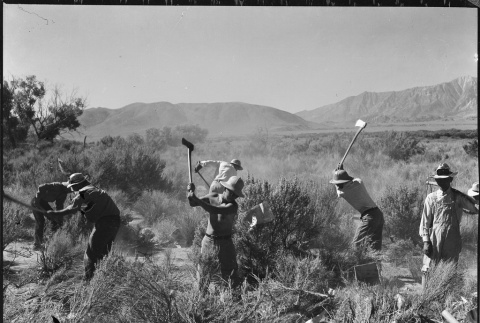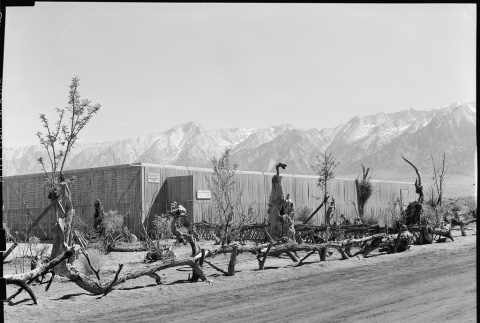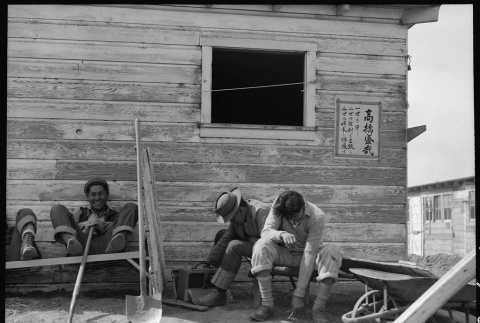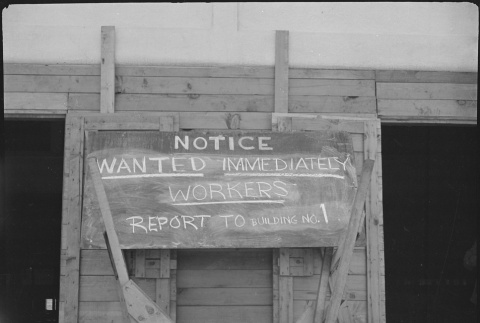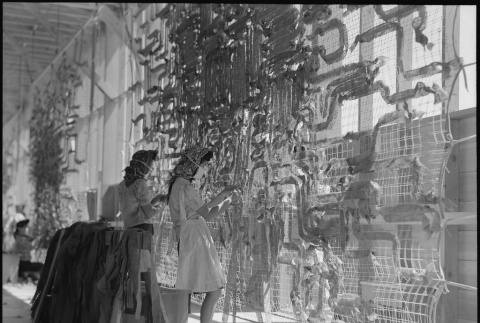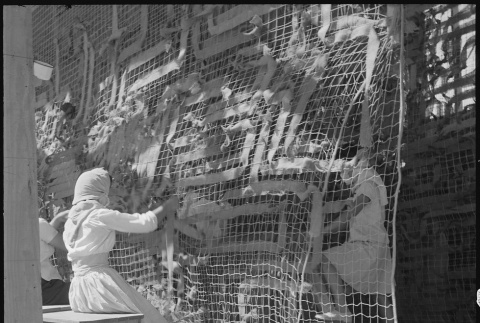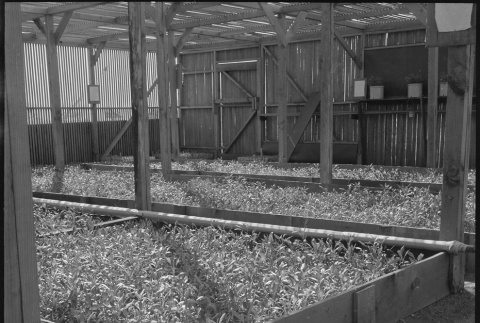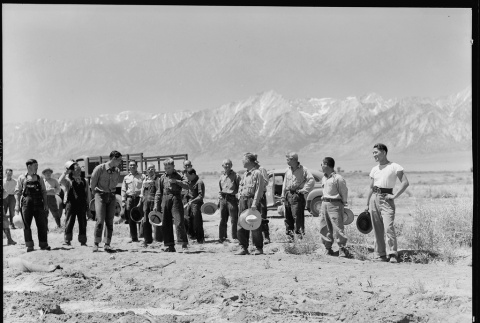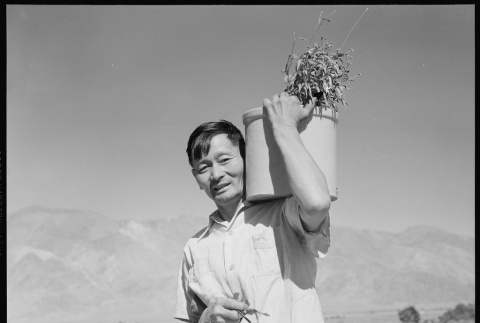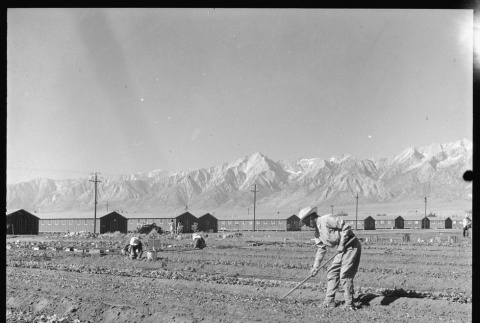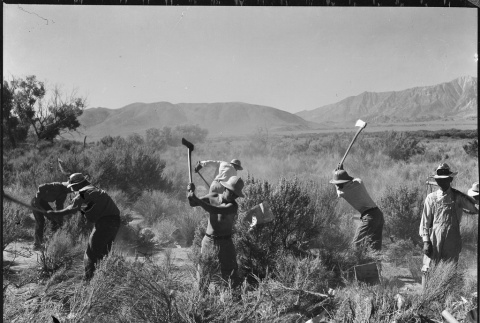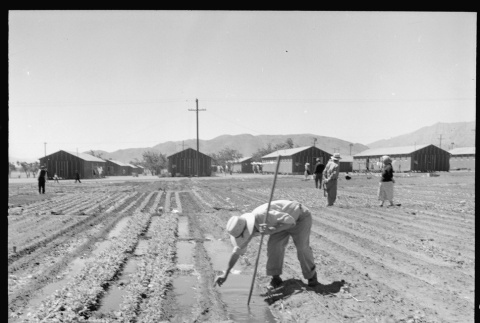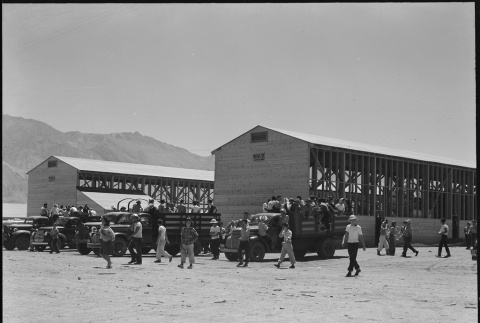Work and jobs
Both Issei and Nisei took jobs within the camps, at wages set not to exceed soldiers' pay: $12 per month for unskilled labor, $16 for skilled labor, and $19 for professional employees. WRA staff was paid much more for the same jobs. Though public opinion mandated such low pay, dissatisfied Japanese Americans objected to losing their right to make a decent living. They had to use their sparse income for necessities, such as warm clothing and shoes.
World War II
(231)
Concentration camps
(1454)
Work and jobs
(1374)
Related articles from the
Densho Encyclopedia :
Amache Silk Screen Shop
1374 items
1374 items
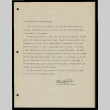
doc
Notice from Harry Tateishi, Foreman, Canal Project, to the residents of Heart Mountain, 1943 (ddr-csujad-55-670)
Notice from Harry Tateishi, foreman on Canal Project, to incarcerees at the Heart Mountain incarceration camp regarding a forthcoming agricultural program and irrigation project. See this object in the California State Universities Japanese American Digitization project site: sac_jaac_0672
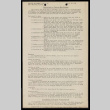
doc
Sentinel supplement, series 59 (April 22, 1943) (ddr-csujad-55-1048)
News bulletin for incarcerees covering announcements, events, programs, policies, recreational activities, and jobs at Heart Mountain incarceration camp. Current issue includes information on "cleanup week," holy communion schedule, dry goods sale, a Rho conference, and softball. See this object in the California State Universities Japanese American Digitization project site: sac_jaac_1050
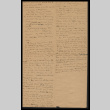
doc
Draft letter (ddr-csujad-55-1905)
Handwritten correspondence draft regarding employment at the library, daily life at the incarceration camp, and the "Manzanar section," probably referring to incarcerees from Manzanar who were segregated at Tule Lake. See this object in the California State Universities Japanese American Digitization project site: sac_jaac_1908
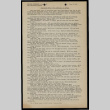
doc
Sentinel supplement, series 80 (June 3, 1943) (ddr-csujad-55-1061)
News bulletin for incarcerees covering announcements, events, programs, policies, recreational activities, and jobs at Heart Mountain incarceration camp. Current issue includes information on employment opportunities, civil service positions, a university scholarship, memorial services, and volunteer firefighter training. See this object in the California State Universities Japanese American Digitization project site: sac_jaac_1063
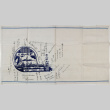
img
Minidoka Co-op signed cloth (ddr-densho-477-1)
Cream colored cloth banner with a dark blue design. The design on the left commemorates the Minidoka Co-op. The writing in the design reads "Consumers / Co-op / Hunt, Idaho * 1945" in blue. The banner is signed by many people, which some writing in English and some in Japanese.
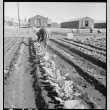
img
Japanese Americans tending crops (ddr-densho-151-36)
Original WRA caption: Manzanar Relocation Center, Manzanar, California. Evacuee in her "hobby garden" which rates highest of all the garden plots at this War Relocation Authority center. Vegetables for their own use are grown in plots 10 x 50 feet between rows of barracks.
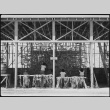
img
Japanese Americans making camouflage nets (ddr-densho-151-410)
Original caption: Manzanar Relocation Center, Manzanar, California. Making camouflage nets for the War Department. This is one of several War and Navy Department projects carried on by persons of Japanese ancestry in relocation centers.
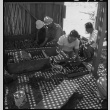
img
Japanese Americans working in lath house (ddr-densho-151-386)
Original caption: Manzanar Relocation Center, Manzanar, California. A view of section of the lath house at this War Relocation Authority center where seedling guayule plants are propagated by experienced nurserymen evacuees in the guayule rubber experiment work.
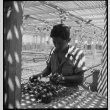
img
Japanese American working in lath house (ddr-densho-151-470)
Original caption: Manzanar Relocation Center, Manzanar, California. An evacuee is shown in the lath house sorting seedlings for tranplanting. These plants are year-old seedlings from the Salinas Experiment Station.
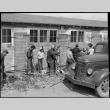
img
Japanese American workers digging a ditch (ddr-densho-151-342)
Original caption: San Bruno, California. Maintenance work, repair and construction is done by volunteer evacuee workers. The wages are $8.00 per month for 48 hours per week. This gang of boys and young men are digging a drainage tank along the front of one of the barracks.
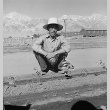
img
Japanese American in field (ddr-densho-151-375)
Original caption: Manzanar Relocation Center, Manzanar, California. Ogura Shuichi, born in Pasadena. He attended Pasadena Junior College and was a visiting student at the California Institute of Technology. He is now working as a plant statistician for the guayule rubber experiment project at this War Relocation Authority center for evacuees of Japanese ancestry.
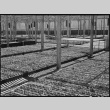
img
Guayule plants (ddr-densho-151-383)
Original caption: Manzanar Relocation Center, Manzanar, California. View of one of the lath house where seedlings are grown under controlled conditions, for the guyaule rubber experiment project.
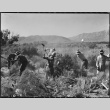
img
Japanese Americans clearing land (ddr-densho-151-37)
Original WRA caption: Manzanar Relocation Center, Manzanar, California. More land is being cleared of sage brush at the southern end of the project to enlarge this War Relocation Authority center for evacuees of Japanese ancestry.
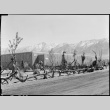
img
Lath house (ddr-densho-151-384)
Original caption: Manzanar Relocation Center, Manzanar, California. Exterior view of the lath house of guyaule rubber experiment project in which seedlings are grown under controlled conditions with a staff of 22 workers, under the direction of Walter T. Watanabe. The initial shipment of 100,000 seedlings came from the Salinas Experiment Station. Note decorative desert garden.
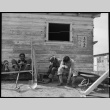
img
Japanese American workers resting in shade (ddr-densho-151-343)
Original caption: San Bruno, California. Time out for some of the boys on the Work Corps. All maintenance work, repair and construction is done by volunteer evacuee workers. The wages are $8.00 per month for 48 hours a week. This gang of boys and young men are digging a drainage tank along one of the barracks.
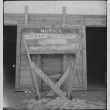
img
"Help wanted" sign (ddr-densho-151-229)
Original caption: San Bruno, California. "Help Wanted" sign displayed for newly arrived evacuees. There was much work to be done since the center was opened on the previous day. Three weeks later there were 8,000 persons of Japanese ancestry in this center.
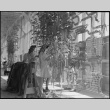
img
Japanese Americans making camouflage nets (ddr-densho-151-409)
Original caption: Manzanar Relocation Center, Manzanar, California. Making camouflage nets for the War Department. This is one of several War and Navy Department projects carried on by persons of Japanese ancestry in relocation centers.
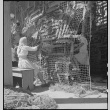
img
Japanese Americans making camouflage nets (ddr-densho-151-411)
Original caption: Manzanar Relocation Center, Manzanar, California. Making camouflage nets for the War Department. This is one of several War and Navy Department projects carried on by persons of Japanese ancestry in relocation centers.
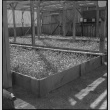
img
Guayule plants (ddr-densho-151-382)
Original caption: Manzanar Relocation Center, Manzanar, California. Guayule beds in the lath house at this War Relocation Authority center. These plants are year-old seedlings from the Salinas experiment station which are ready to be transplanted into the open ground.
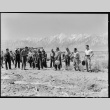
img
Farm crew (ddr-densho-151-389)
Original caption: Manzanar Relocation Center, Manzanar, California. Farm crew of which Johnny Fukazawa is foreman. These men are ready to return to the center's mess hall for lunch after a busy morning in the fields of the farm project at this War Relocation Authority center.

img
Japanese American holding guayule plant (ddr-densho-151-469)
Original caption: Manzanar Relocation Center, Manzanar, California. George J. Yokomizo, hybridizer for the guyaule rubber experment project, outside the lath house with one of the guyale plants from which he hopes to develop seed.
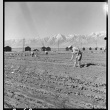
img
Japanese Americans tending crops (ddr-densho-151-35)
Original WRA caption: Manzanar Relocation Center, Manzanar, California. Evacuees of Japanese ancestry are growing flourishing truck crops for their own use in their "hobby gardens." These crops are grown in plots 10 x 50 feet between blocks of barrack at this War Relocation Authority Center.
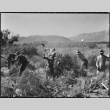
img
Japanese Americans clearing brush (ddr-densho-151-388)
Original caption: Manzanar Relocation Center, Manzanar, California. More land is being cleared of sage brush at the southern end of the project to enlarge this War Relocation Authority center for evacuees of Japanese ancestry.
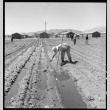
img
Japanese Americans gardening (ddr-densho-151-65)
Original WRA caption: Manzanar Relocation Center, Manzanar, California. Evacuees of Japanese ancestry are growing flourishing truck crops for their own use in their "hobby gardens". These crops are grown in plots 10 x 50 feet between blocks of barrack at this War Relocation Authority center.
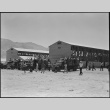
img
Japanese Americans making camouflage nets (ddr-densho-151-408)
Original caption: Manzanar Relocation Center, Manzanar, California. Making camouflage nets for the War Department. This is one of several War and Navy Department projects carried on by persons of Japanese ancestry in relocation centers.
